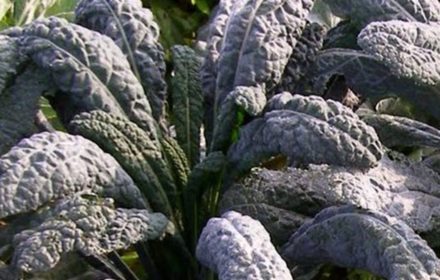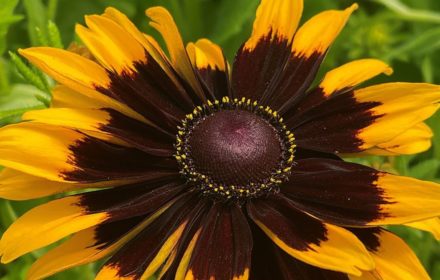Growing Red Giant Mustard from Seeds in the UK
Red Giant Mustard (Brassica juncea) is a stunning Japanese variety with vibrant reddish-maroon, savoyed leaves that add both beauty and flavour to your garden and kitchen. Known for its thick, slightly textured leaves and robust, zesty taste, Red Giant Mustard is perfect for adding a spicy kick to salads, stir-fries, and soups. This versatile, fast-growing leafy green thrives in the UK climate, making it an excellent choice for garden borders, allotments, and containers. Follow this comprehensive guide to sow and grow Red Giant Mustard from seeds in your garden.
When and Where to Sow Red Giant Mustard Seeds
- Outdoor Sowing: Sow seeds directly outdoors from early spring to late autumn (March to October), taking advantage of cooler temperatures to produce the best-tasting leaves. This mustard variety can tolerate light frost, making it suitable for late-season harvests.
- Indoor Sowing: For an earlier start or to extend the growing season, sow seeds indoors from late winter. This will give your plants a head start and ensure an earlier harvest. Use seed trays or small pots filled with fine seed compost.
Ideal Growing Conditions for Red Giant Mustard
- Soil Requirements: Red Giant Mustard prefers well-drained, fertile soil enriched with organic matter. Before sowing, prepare the soil by adding compost or well-rotted manure. The ideal soil pH is slightly acidic to neutral (6.0-7.0).
- Sunlight: Choose a location that receives full sun to partial shade. While Red Giant Mustard can tolerate some shade, full sun promotes vigorous growth and the best leaf colour.
- Temperature: The ideal temperature range for germination is between 12-20°C (54-68°F). This cool-season crop thrives in the UK climate and performs best in cooler weather, making it a perfect choice for spring and autumn cultivation.
How to Sow Red Giant Mustard Seeds Outdoors
- Prepare the Seed Bed: Choose a well-prepared, fine-textured seed bed. Remove any weeds and rake the soil to a fine tilth.
- Sowing Depth and Spacing: Sow the seeds thinly at a depth of approximately 6 mm (¼ inch). Space rows approximately 45 cm (18 inches) apart, or closer if space is limited. For container growing, use a wide, shallow pot with good drainage.
- Watering: Water gently after sowing to settle the soil. Keep the soil moderately moist during the germination period, which usually takes 7-14 days.
- Thinning: Once seedlings are large enough to handle, thin them out gradually to about 15 cm (6 inches) apart. Thinned seedlings can be used as microgreens or added to salads.
Sowing Red Giant Mustard Seeds Indoors
- Sowing in Pots: Fill seed trays or small pots with seed compost and sow seeds thinly on the surface. Lightly cover with a thin layer of compost.
- Germination Conditions: Place the pots in a bright, cool location with temperatures between 12-20°C. Keep the compost moist but not waterlogged. Germination usually occurs within 7-14 days.
- Transplanting: When seedlings have developed their first true leaves, transplant them into larger pots or directly into the garden. Harden off indoor-grown seedlings by gradually acclimatising them to outdoor conditions before planting out.
Caring for Red Giant Mustard Plants
- Watering: Keep the soil consistently moist, especially during dry periods, to prevent the plants from bolting. Water at the base of the plants to avoid wetting the leaves, which can lead to disease.
- Feeding: Red Giant Mustard is a leafy green and benefits from regular feeding. Apply a balanced liquid fertiliser every few weeks to encourage healthy, vigorous growth.
- Mulching: Apply a layer of mulch around the base of the plants to retain soil moisture, suppress weeds, and regulate soil temperature.
- Pest Control: Keep an eye out for common pests such as flea beetles and aphids. Use row covers to protect young plants or treat infestations with organic insecticidal soap if necessary.
Harvesting Red Giant Mustard
- Leaf Harvesting: Begin harvesting individual leaves when they reach around 10-15 cm (4-6 inches) in length. For the best flavour, pick outer leaves first, leaving the inner leaves to continue growing. This “cut-and-come-again” method allows for multiple harvests from each plant.
- Full Plant Harvest: For a full harvest, cut the entire plant at the base. This can be done when the plant is mature and before it bolts, typically around 40-50 days after sowing.
- Best Flavour: Red Giant Mustard leaves are most tender and flavourful when harvested young. Mature leaves can become tougher and more pungent, making them ideal for cooking.
Extending the Harvest
- Successional Sowing: To enjoy a continuous supply of fresh mustard leaves, sow seeds every 2-4 weeks throughout the growing season. This ensures you have young, tender leaves available for harvesting.
- Winter Harvest: With some protection, such as cloches or fleece, Red Giant Mustard can be harvested well into winter in milder UK regions. The flavour improves with cooler temperatures, making it an excellent winter green.
Common Questions About Growing Red Giant Mustard
- Can I grow Red Giant Mustard in containers? Yes, Red Giant Mustard grows well in containers. Choose a wide, shallow pot with good drainage, and use a quality potting mix. Regular watering is essential, as container-grown plants can dry out quickly.
- Why are my mustard plants bolting? Bolting is often caused by high temperatures, drought, or stress. To prevent bolting, ensure consistent moisture, provide some shade during hot weather, and harvest leaves regularly.
- Is Red Giant Mustard frost-hardy? Yes, Red Giant Mustard is relatively frost-hardy and can withstand light frosts. In milder climates, it can be grown well into winter with some protection.
By following these guidelines, you can enjoy a bountiful harvest of Red Giant Mustard in your UK garden. Whether grown for its striking foliage or its spicy flavour, this versatile green is a valuable addition to any vegetable patch or kitchen garden.


















